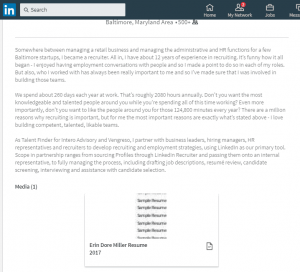
As a scarecrow Worzel Gummidge (the old, scary 1970s one with Jon Pertwee and not the new cool BBC version with Mackenzie Crook) had a ‘special’ heads he would put on for important jobs. Worzel’s extra heads gave him insights, experience and wisdom to help save the day.
If Worzel Gummidge was tasked today with solving the world of remote working, I am sure he would say, ‘to solve that problem, I need to put my remote worker head on’.
Those of you not scared by the 1970s Worzel Gummidge and want to know more, check out this Wikipedia link.
Remote working presents unique problems
I say the old Worzel would be spot on; remote working isn’t the same as working in the office, so we need to look at the problems and workers needs differently, we need different heads.
It’s not just the obvious, remote working is more than a notebook and Zoom. It’s a more complex, subtle rethinking of the business, to establish new disciplines and new business culture.
Office and remote problems are not the same
Imagine the scene, you are in the office, and a new tool or process is launched. You try using the new system and have a problem, the documentation isn’t as straightforward as it could be, so it doesn’t solve your issues, what happens? Probably after a short while of faffing and checking you admit defeat and ask your desk neighbour for help, annoying, but you are sorted.
Now the same scene as a remote worker, it’s more complicated and problematic, the cycle goes like this:
- Using a process, you find its changed, and you are stuck, and you cannot finish the task in the time you expected and committed to. So you ‘hunt out’ the new documentation, whilst thinking, why has my tool changed?
- Using the documentation and the new process, it doesn’t work, and you are stuck. So you try reworking the process over and over again, in case the problem is you.
- You get to the point where you need help, but calling out is hard, who do you call? You don’t know what people are doing; they might be busy? They might not want to help you, and maybe they don’t know the answer? Maybe everyone knows about the new process, and no one wants to look stupid!
- Solution one, try revisiting the ‘not clear’ process and documentation one more time, is it me or can I fudge it?
- Still stuck, solution two, is there a workaround? Excellent, job done!
- Solution three, eventually, you try calling out for help, and so it goes on.
What are the impacts?
Productivity and quality are impacted, but the lack of clarity has implications for the employee. They will question their skills, competence, and relevance to the organisation. The spiral builds; they lose confidence, so speaking with people is avoided, they fear the future and become withdrawn, unhappy people.
Complexity is a risk
I have a long-held theory that complexity is a habit in businesses. I refer to it as a comfort blanket, driven from power and control, culture, and lack of clarity of purpose.
It’s pretty toxic as ways of working are created, or evolve to ‘protect’ powerbases rather than serve the business and the people who use the processes.
In the new remote world, this behaviour presents even more risks to the business. How do you penetrate the complexity or multiple layers of complexity to perform your tasks, and how might this make you feel?
How can Worzel help?
Our ‘remote working head’ is how we can view the world as a remote employee sitting in their home office, kitchen table or coffee shop?
How does the employee view the organisation, assume they know nothing, what are their specific needs to perform their role competently, with confidence and efficiency?
It may sound easy, and it’s not meant to be a trick question, but the results will be revealing, then extrapolate a few consequences to help address the problems.
5 Questions to ask yourself when wearing your remote working head
- Did I know there was a change coming to the process or tool, why change, what’s changed and what do I need to do now, how might people perceive the change if they are already feeling isolated and disconnected?
- Think functionally, how easy is this task as a remote worker? Imagine if you were using a single notebook screen, do you have all the information to hand, how would the system run on a slow network or a connected phone?
- How good is the documentation? Imagine you know nothing, you are a new starter, and you have no one to ask, how good is the documentation now? How easy is it to follow on a screen rather than a hard copy, how does the document look on a phone?
- How easy is it to find this excellent documentation, does the remote worker or new starter know it even exists?
- What problems might the remote employee encounter, and how can these be supported? Who can they call for help, even if they are reluctant to call out?
It’s not just tools and processes
Please don’t assume that a lack of clarity or functional knowledge always relates to a process or tool; it could equally be the job role, expectations, or project-specific requirements. An unfortunate thing happens when you are remote, what seems perfectly clear on a call or email, when you try and action the task two days later at home, by yourself, all of a sudden things are not as clear as we all thought they were.
Key take away
As with in person engagement, creating clarity is critical to a tasks successful completion, business productivity and employee wellbeing, but when we are remote, it’s even more important.
Creating clarity is more challenging than it seems; communication is loaded with assumptions and takes time, so test your work and thinking by putting your remote work head on.
Business & Finance Articles on Business 2 Community
(6)








